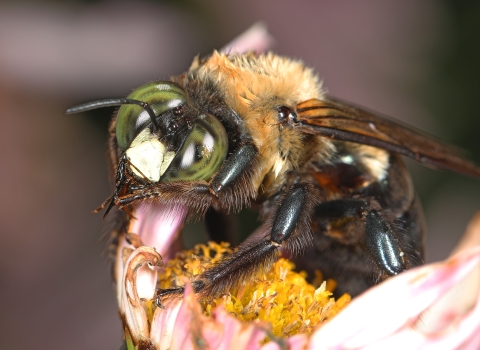Q1: Why is the U.S. Fish and Wildlife Service reclassifying Eugenia woodburyana from endangered to threatened?
A1: Following a review of the best scientific and commercial information available and analyses of threats, the Service has concluded that Eugenia woodburyana no longer fits the Endangered Species Act (ESA) definition of endangered and is therefore finalizing its reclassification from endangered to threatened.
Q2: How does the ESA define endangered and threatened?
A2: The ESA defines endangered as “in danger of extinction throughout all or a significant portion of its range” whereas “threatened” is defined as “likely to become an endangered species within the foreseeable future throughout all or a significant portion of its range.”
Q3: What prompted the Service to take this action?
A3: In 2017, the Service completed a five-year status review that recommended the reclassification of E. woodburyana to threatened. According to the five-year review, new occurrences of the plant have been located since the completion of the recovery plan in 1998, and a substantial number of new individuals had been documented. We now know of 3,262 individual plants, including all age classes – from adults to saplings to seedlings.
Q4: What recovery actions have been implemented to lessen the threats to the species?
A4: The Service, in collaboration with local partners, has successfully implemented the following recovery actions:
Developing propagation protocols under nursery conditions;
Planting additional trees in natural populations;
Introducing individuals into lands managed for conservation;
Enhancing habitat of natural and introduced populations with native tree species;
Enhancing and restoring habitat on private lands;
Excluding cattle and fire breaks;
Conducting comprehensive surveys and monitoring natural populations; and
Conducting outreach and education.
Q5: What are the remaining threats to Eugenia woodburyana?
A5: Remaining threats that will make this tree likely to become endangered again in the foreseeable future include habitat loss, degradation and fragmentation; and other natural or human-made factors such as hurricanes, fires and landslides.
Q6: What is Eugenia woodburyana and what is its range?
A6: Eugenia woodburyana is an evergreen tree that can reach a height of almost 20 feet. Self-sustaining E. woodburyana natural populations are known to occur in six locations in southern Puerto Rico, extending from the municipality of Cabo Rojo in the southwest eastward to the municipality of Salinas in the south.
Q7: What is the population status of Eugenia woodburyana?
A7: According to the review of the best available information, approximately 3,262 individuals are known; 73 percent of those occur under protective status in areas managed for conservation and where threats due to habitat modification have been reduced. In addition, more than 333 individuals have been successfully propagated and established in nine different sites in Puerto Rico.
Q8: What did the Service consider in reaching its decision to reclassify Eugenia woodburyana?
A8: In the 2017 five-year status review, the Service recommended reclassifying the plant from endangered to threatened. Following the ESA, the Service determines whether a species is endangered or threatened based on one or more of the five following factors:
The present or threatened destruction, modification or curtailment of its habitat or range;
Overutilization for commercial, recreational, scientific or educational purposes;
Disease or predation;
The inadequacy of existing regulatory mechanisms; or
Other natural or human-made factors affecting its continued existence.
Q9: Where can I find the 2017 five-year review for Eugenia woodburyana?
A9: The review is available at https://ecos.fws.gov/ecp/species/8346
Q10: What impact does a reclassification have on the public?
A10: Reclassification to threatened means federal, state and partnering organizations, private citizens, public and private landowners and academia successfully moved this species away from the immediate threat of extinction. Conservation and monitoring efforts for E. woodburyana will continue.
Q11: What is a 4(d) rule?
A11: The Service has the discretion under section 4(d) of the ESA to issue special regulations for a threatened species that are necessary and advisable for the conservation of the species.
Q12: What is included in the 4(d) Rule?
A12: To provide for the conservation of E. woodburyana, the 4(d) rule outlines prohibitions “necessary and advisable” for the conservation of the species including, except as otherwise authorized or permitted are: importing or exporting the species; certain acts related to removing, damaging and destroying; delivering, receiving, transporting or shipping in interstate or foreign commerce in the course of commercial activity; selling or offering for sale in interstate or foreign commerce; or collecting plant material (seeds, seedlings, propagules or cuttings) and natural individuals or those planted to enhance the status of the species in the wild.
The 4(d) rule will allow for the use of cultivated seeds for activities including scientific purposes, to enhance propagation or survival of the tree, for botanical or horticultural exhibition, for educational purposes or for other purposes consistent with the purposes of the ESA.



